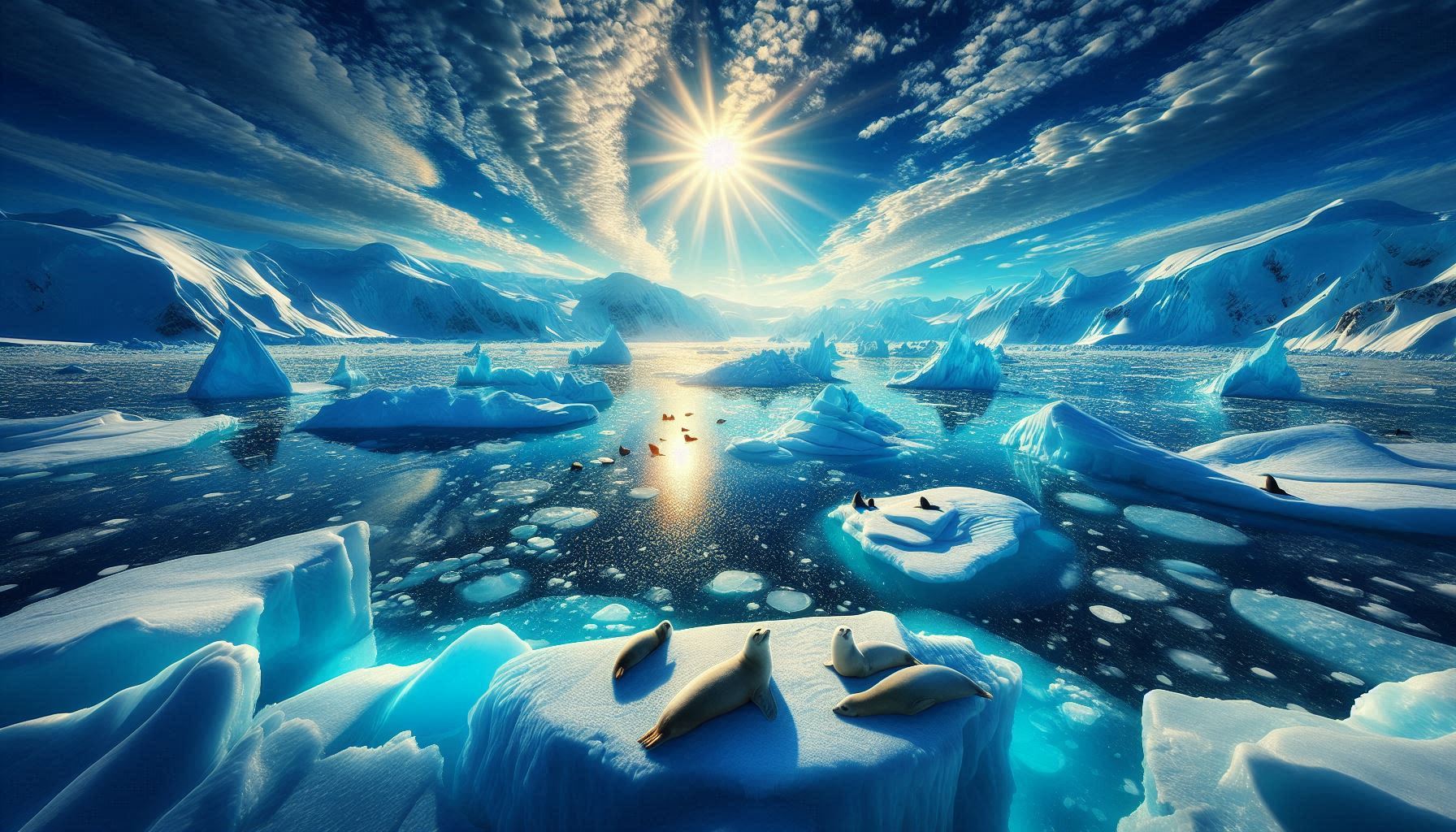When a liquid becomes a solid, its density increases, so its specific gravity becomes heavier and most things sink in liquids, but ice, being a solid, does not sink and instead floats in liquid water. It’s a common sight in everyday life, but water, which is always around us, has some pretty special properties among substances, and it seems that ice has similarly special properties. If the water in a lake were to cool and freeze due to cold wind, and then sink, more ice would sink and the water on the surface would continue to freeze, until the entire lake was frozen. In fact, because ice floats on water, the water does not freeze and living things can survive in the water. It is believed that the properties of ice are intended to nurture life. Ice is amazing.
Speaking of huge ice, there are glaciers, which are masses of perpetual snow in the polar regions and high mountains. If a large amount of a glacier melts in a short period of time and a lot of fresh water flows into the ocean, there is a risk that the ecosystem will change, but it seems that gradual melting is necessary for the ecosystem. When the tip of a glacier submerged in seawater melts from the bottom of the ocean and becomes fresh water, the fresh water rises due to the density difference with the seawater, and it rises to the sea surface while stirring up nutrient-rich seawater and plankton from the deep seabed. This is also a nutrient cycle that defies gravity. Ice and water are amazing.
https://www.spf.org/opri/newsletter/572_1.html
I also learned about ice algae, a type of snow algae that lives under drift ice. It seems that this algae is responsible for the carbon cycle. Ice transmits light, so photosynthesis is possible even under the ice. The ice algae that grow under the ice sink to the ocean floor when the ice melts and provide nutrients to living organisms. It’s amazing that there are living organisms in the cryosphere in the first place. The light-transmitting properties of ice are amazing. And the algae are amazing, too.
https://esse-sense.com/articles/75
Drift ice not only nurtures ice algae, but also creates a deep ocean circulation that takes 2000 years to circulate. Drift ice is made of frozen ocean water, which traps highly saline water called brine inside. As this brine escapes into the water, gaps like an ant colony are created in the drift ice, and living organisms live in these gaps. As the brine that escapes into the water is low temperature and highly saline, it sinks to the seafloor and stirs up the ocean water. The deep ocean circulation is created by the sinking of the brine. Drift ice is amazing, isn’t it?
https://www.nodai.ac.jp/research/teacher-column/0263
The properties of ice, such as its ability to float and transmit light, and the properties of salty water create many cycles. Ice is amazing. The Earth is amazing, being filled with mysterious water and ice.


